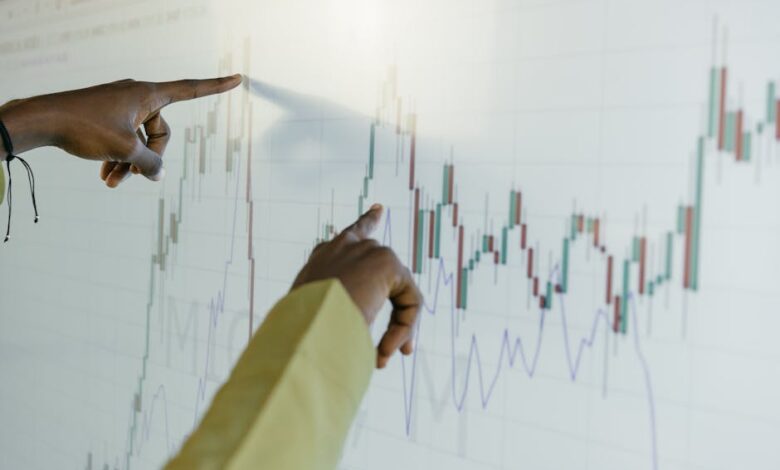Weathering the Storm: Understanding Recession Indicators, Economic Impact, and Resilient Investment Strategies

As the global economy fluctuates and uncertainty lingers, understanding the early warning signs of a recession becomes increasingly vital for individuals and businesses alike. Economic downturns can ripple through various sectors, reshaping consumer behavior, altering investment landscapes, and challenging the resilience of supply chains. In this article, we will explore the critical indicators that signal an impending recession, the diverse impacts on different sectors of the economy, and effective strategies for investing during turbulent times. We will also delve into the role of government stimulus in mitigating the effects of recessions and examine how consumer behavior adapts in response to economic challenges. Furthermore, we will reflect on past recessions to draw valuable lessons that can inform current practices and strategies. By equipping ourselves with knowledge and understanding, we can better prepare for and navigate the complexities of economic downturns, ensuring that businesses and investors are ready to not only survive but thrive in the face of adversity.
- 1. **Identifying the Early Warning Signs: Recognizing Recession Indicators**
- 2. **Navigating the Economic Landscape: Sectors Affected by Recessions and Investment Strategies**
1. **Identifying the Early Warning Signs: Recognizing Recession Indicators**
Recognizing the early warning signs of a potential recession is crucial for businesses, investors, and policymakers. There are several key indicators that can signal an impending economic downturn.
One of the most commonly referenced indicators is the yield curve, particularly the inversion of the yield curve, where long-term interest rates fall below short-term rates. This inversion is often seen as a predictor of recession, reflecting market expectations of slower economic growth.
Another important indicator is gross domestic product (GDP) growth. A sustained period of declining GDP, particularly two consecutive quarters of negative growth, is a traditional signal of a recession. Analysts also pay attention to manufacturing activity, as a decline in industrial production and a drop in the Purchasing Managers' Index (PMI) can indicate weakening economic conditions.
Employment data is another vital sign. Rising unemployment claims or a slowdown in job creation can suggest that businesses are anticipating lower consumer demand and may start cutting back on hiring or laying off workers. Consumer confidence indexes also play a significant role; if consumers feel uncertain about their job security or the overall economy, they are likely to reduce spending, which can further exacerbate economic slowdowns.
Additionally, changes in consumer spending patterns, such as increased savings rates or shifts towards essential goods, can signal a downturn. A decrease in retail sales, particularly in discretionary categories, often foreshadows economic contraction.
Finally, external factors such as geopolitical tensions, trade policies, and global economic conditions can also serve as warning signs. Monitoring these indicators can help stakeholders make informed decisions to mitigate risks associated with a recession.
Economic recessions are characterized by a decline in economic activity across various sectors. Early warning signs often include rising unemployment rates, decreasing consumer spending, declining industrial production, and a drop in stock market performance. These indicators can serve as crucial signals for businesses and investors to adjust their strategies accordingly.
During a recession, different sectors of the economy respond in varied ways. Consumer discretionary sectors, such as retail and entertainment, typically suffer the most as consumers prioritize essential goods and services over luxury items. Conversely, sectors like utilities and healthcare may experience more stability, as demand for these services remains relatively constant regardless of economic conditions.
Investing during a recession requires a strategic approach. Defensive stocks, which include utilities, consumer staples, and healthcare companies, often provide more reliable returns during downturns. Additionally, diversifying investments and considering recession-resistant industries can help mitigate risk.
Government stimulus plays a vital role in alleviating the effects of recessions. By implementing monetary and fiscal policies, such as lowering interest rates or increasing public spending, governments can stimulate economic activity, support job retention, and restore consumer confidence.
Consumer behavior also shifts during economic downturns, with increased saving rates and altered spending habits. Consumers may become more cautious, focusing on necessity rather than luxury, which can further exacerbate the challenges faced by businesses in affected sectors.
Global trade and supply chains are significantly impacted during recessions, as demand for goods and services declines worldwide. This reduction can lead to disruptions in supply chains, affecting production schedules and international trade relationships.
Lessons learned from past recessions, such as the Great Depression or the 2008 financial crisis, emphasize the importance of preparedness and adaptability for both businesses and individuals. Companies that maintain strong liquidity, invest in technology, and foster agile supply chains are better equipped to navigate economic downturns.
To prepare for and survive a recession, businesses should focus on cost management, workforce flexibility, and enhancing customer relationships. By assessing their financial health and implementing risk management strategies, companies can position themselves to endure and eventually thrive in a post-recession environment.
2. **Navigating the Economic Landscape: Sectors Affected by Recessions and Investment Strategies**
Recessions have a profound impact on various sectors of the economy, leading to shifts that investors must navigate carefully. Historically, cyclical sectors, such as consumer discretionary, travel, and luxury goods, tend to be the most vulnerable during economic downturns. As consumers tighten their budgets, spending on non-essential items declines, resulting in reduced revenues for companies in these industries. Conversely, defensive sectors, including utilities, healthcare, and consumer staples, often exhibit resilience, as demand for essential goods and services remains relatively stable regardless of economic conditions.
Investors looking to safeguard their portfolios during a recession should consider reallocating their investments toward these defensive sectors, as they typically provide more reliable returns in turbulent times. Additionally, sectors such as technology and essential services may also present opportunities for growth, particularly if they offer innovative solutions that address emerging consumer needs.
Another effective investment strategy during a recession is to focus on high-quality stocks with strong balance sheets, consistent cash flows, and a history of weathering economic storms. Dividend-paying stocks can be particularly attractive, as they provide a steady income stream, cushioning the impact of market volatility.
Investors may also explore fixed-income assets, such as government bonds, which are generally viewed as safe havens during economic uncertainty. The demand for these instruments often increases when market confidence wanes, leading to potential capital appreciation.
In conclusion, while recessions pose significant challenges across various sectors, a strategic approach to investing—prioritizing defensive sectors, high-quality stocks, and safe-haven assets—can help investors navigate the economic landscape more effectively and potentially capitalize on opportunities that arise amid downturns.
In conclusion, understanding the early warning signs of an economic recession is crucial for both consumers and businesses alike. By recognizing these indicators, stakeholders can take proactive measures to mitigate potential impacts. As we have explored, recessions do not affect all sectors uniformly; some may experience severe downturns while others may demonstrate resilience. This variance highlights the importance of informed investment strategies tailored to the current economic climate.
Government stimulus plays a pivotal role in cushioning the effects of recessions, providing necessary support to sustain consumer confidence and stabilize markets. However, consumer behavior inevitably shifts during economic downturns, leading to changes in spending patterns that businesses must adapt to effectively. The interconnected nature of global trade and supply chains further complicates the repercussions of a recession, emphasizing the need for businesses to build flexibility and resilience into their operations.
Reflecting on lessons learned from past recessions can offer invaluable insights into navigating future economic challenges. By preparing adequately and implementing sound strategies, businesses can not only survive but potentially thrive during downturns. Ultimately, fostering a proactive mindset and embracing adaptability will equip both individuals and organizations to weather the storm of economic uncertainty, ensuring they emerge stronger in the recovery that follows.





